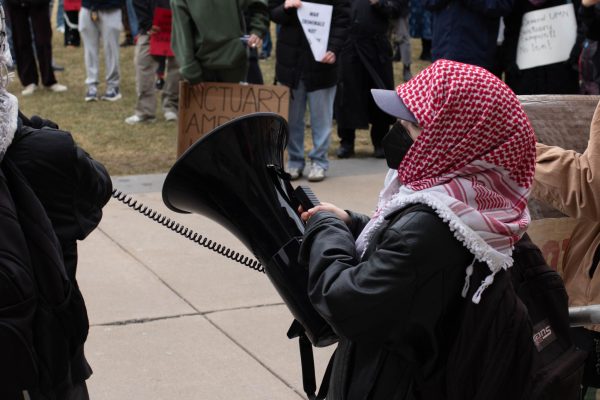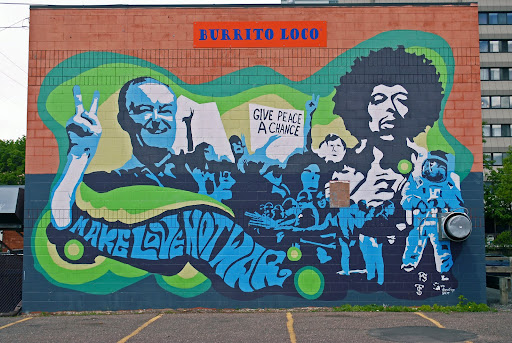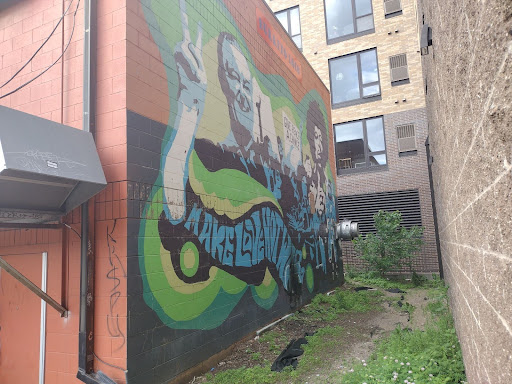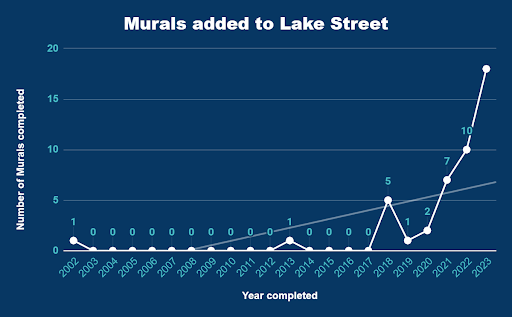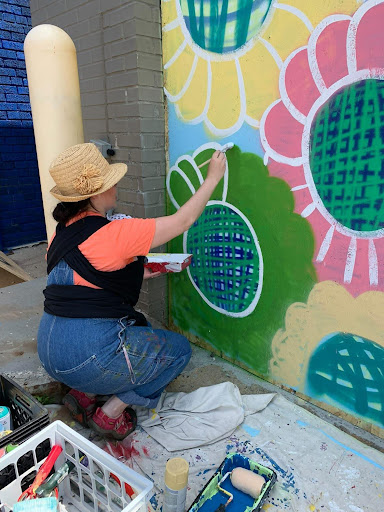Posted on 02 October 2024.
Of the 110 student groups that applied for Student Services funding (SSF) during the 2023-2024 academic year, 103 received a total of about $950,000 for events and operations while seven were denied funding, according to Student Affairs Office Associate Director Sara Carvell.
The University of Minnesota’s Student Affairs Office wrote in an email to the Minnesota Daily that it budgeted $1.4 million for student groups for the 2023-2024 academic year, but only $1.2 million was collected because fewer students paid the SSF than anticipated.
The University wrote in the email there was $235,694 in unused funding from the academic year 2023-2024. Combined with a previous carry-forward balance of about $565,000, that brings the total SSF account up to $799,722 as of June 30.
According to Carvell, extra money may go to the student resource center or future student group events.
The SSF budget has fluctuated over the years, according to the Office of Student Affairs. This was partially due to less students requesting funds and a drop in registered student groups during the pandemic.
For the current year, the Student Services Fee Committee (SSFC) provided about $600,000 for 79 student groups, covering a planned 234 student events, according to Carvell.
Students, including those not in a student group, pay around $20 per semester to fund student groups in the 2024-25 academic year, according to calculations made by the Office of Student Affairs. Additionally, each student paid $495 to fund administrative units such as the Aurora Center and around $9 for media groups like the Daily or Radio K.
Funding context
Student groups have a rolling process for requesting funds anytime for operations during the 2024-2025 academic year. There are eight opportunities for student groups to request SSF funds per year, with the third concluding on Sept 27.
University’s Undergraduate Student Government (USG) President Rahma Ali said that to budget for the current year, USG had to make a budget request in the spring of the last academic year. She said the new academic year is when the requests are approved.
“Right now we are having conversations with the student government executive board on how much we want for grants, specific budget line items, and how much we want for events,” Ali said. “Once that is approved and goes through the forum, it gets sent to SSF to approve the budget that’s set for the school year.”
Ali said some major USG events include Row the Vote and the Global Gala hosted in Coffman Union.
“We make sure students are registered to vote, and our legislative affairs team works very well on that,” Ali said. “And for community events, our committees are able to host events that are for the student body and not just for students within USG.”
USG Treasurer Ethan Del Val Perez said student groups must properly utilize funds they are given in order to continue receiving money from the University. He said USG uses a similar process when giving out USG group event grants.
“You fill a spreadsheet where you’re detailing all of the expenses to make sure that the expenses are appropriate to the mission of the student group and the university,” Del Val said. “If USG asks for $500 and we only spend up to $400, that difference of $100 would then be returned to USG.”
If a student group does not use all the money they receive, they are required by the Student Affairs Office to return what they do not use.
Student groups apply for money by submitting SSF applications that explain how much money each event will need, and what they will use it for. Students put in two types of requests:
- Operational requests:
Operational requests are made to acquire funds for the day-to-day operation of a student group. Students put in operational requests for supplies, dedicated practice space and other miscellaneous logistics.
According to data consolidated from the Student Affairs office, the largest operational SSF allocation was for the Choreo Oreos dance group for $13,681. All of the money went to renting a practice space for the year.
2. Event Requests:
Event requests are made to acquire funds for campus-wide events, and they utilize the majority of available student group funds. Event requests will often include projected expenses for entertainment, advertising, travel and food costs.
According to the data, the largest event SSF allocation was to the Indian Student Association for $24,937. About half of the money was spent providing food to students, and the other half covered miscellaneous expenses such as entertainment and space rentals.
Months in advance, students write down projected costs for food, equipment, space rentals, speaker costs and other miscellaneous expenses. They submit these expenditures, in the form of SSF allocation requests, to the student service fee committee that reviews and approves the submissions.
Former Net Impact President Stephanie Bradt said that when filling out the spreadsheet for funding requests, the Net Impact student group had to detail every line-by-line expense, meeting plan and estimated food amount months in advance.
When the Environmental Student Advocacy group, of which Bradt was once part of, planned a Campus Club dinner with a guest speaker, they did not get enough money for their request.
Bradt said the Campus Club has a cost of $23 per person, and the max SSF request food allocation is around $8 per person. She added that they were only able to get their budget to around $18 per person when including requests for sustainable material and vegetarian options on the SSF form.
“Based on that, they'll decide whether or not our justification is worth more money per person,” Bradt said. “And we still didn't get the amount of money we needed.”
Bradt said the Campus Club was their last option due to its expense, but they were having a professional event with the Minnesota Center for Environmental Advocacy and needed to cater to the lawyers who would be speaking.
“I know that from past experiences, SSF doesn't necessarily like giving out funding for people to have food at their weekly meetings,” Bradt said. “But when you bring free food, everyone's like, ‘Oh my God!’”
Crunching some numbers
Student groups can request between $1,000 to $30,000 in an academic year. Based on the request applications, the SSFC uses “viewpoint-neutral criteria” in accordance with tuition and fees policy to evaluate requests and grant funds to groups that meet the criteria.
To meet the tuition and fees standard, student groups must support non-instructional opportunities, must not count for academic credit and must have their programs available to everyone who pays the SSF.
Highest and lowest student group funding at the U
Both the highest and lowest-funded student groups generally requested funds mostly for practice spaces and food. Students also requested funds for equipment, entertainment, advertising, travel and registration fees for extracurricular events.
Some of the reasons for SSF rejecting requests can include that the group did not need the requested level of funds or lacked timeliness or justification.
The largest discrepancy with requested and allocated funding was the Lutheran Campus Ministry student group, which requested about $25,000 for events and operations and received about $7,000. Their largest requests were for food and entertainment, $12,000 and $4,000 respectively for the year.
There was no written reason on the Lutheran Campus Ministry SSF document for the largest individual request rejection of about $3,000 for food during a spring event.
The largest request a student group made that received no funding for the 2023-2024 school year was the African Student Association. The association requested about $7,500 for an “Africa Night” spring event, with about $4,000 for food, $2,000 for speakers and $1,000 for miscellaneous expenses such as photography and an event space.
The SSFC outlined their rationale for the decision below:
“Since the group did not show up for the agreed upon presentation time, the committee could not provide an alternate presentation time or deliberate on the request as it was submitted,” the SSFC wrote on the Event SSF request form. “The committee has provided the group an opportunity to request below $7,500 and resubmit it for review during the edit period.”
Environmental Student Advocacy (ESA) Treasurer Maya Chilcote said when she attended the SSFC committee meetings that deliberated on requests, the SSFC used a line-by-line process to decide on student group funding.
“They decide each step down how much they are cutting off or whether to approve it, and then they'll leave a comment,” Chilcote said. “At the very end of that process, they will ask if you have any questions, and that's when you're able to kind of clarify why or why not to receive specific funding.”
The SSFC was not available for comment on this story.
What students are saying
ESA President Kobe Knettel said from his perspective, there are some accessibility problems in the amount of red tape surrounding SSF funding.
“We're grateful that we're able to access the Student Service funding as we wouldn't be able to do a lot of our bigger events without it,” Knettel said. “But it can be incredibly frustrating to try to keep up with the deadlines and ensure that the applications are filled out correctly when you aren’t able to yet justify why you're requesting a certain amount.”
Chilcote said the three-month out deadline for requesting event funding can be stressful. She said her receipts deadline and SSF canvas training as ESA treasurer over the summer took away from her study abroad experiences.
Chilcote added that student group officers are student volunteers, managing finances without help, and it is hard to make everything perfect that way.
“The fact is that we are students that are in school, some of us working jobs,” Chilcote said.
Bradt said student groups essentially put on events for free, working for the University using the funds that they pay for through SSF. She added that groups fight tooth and nail to get money that will make the University look better.
“It can feel like a slap in the face sometimes because we're working for free in a way that can make the university a much more vibrant community,” Bradt said.
Bradt said nonprofits are organized like Student Groups, and she has learned how hard it is to get money from people.
“I would say it definitely gave me more experience, and I've seen how that translates with other organizations I've worked for,” Bradt said. “We do have a lot of student groups, so it is hard to give money to everybody for everything.”

